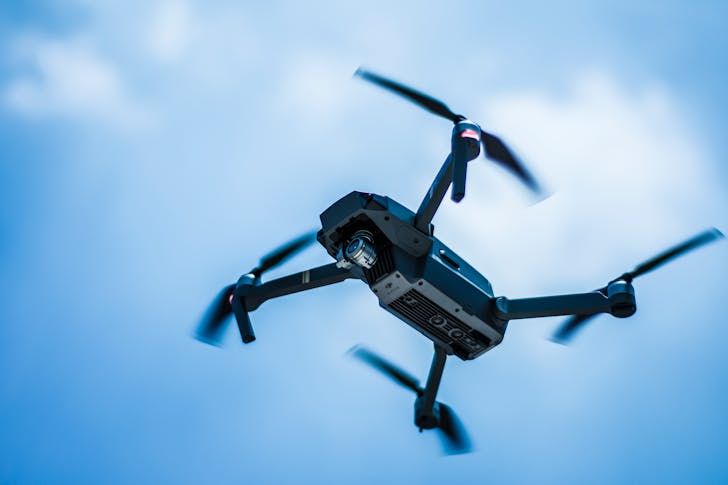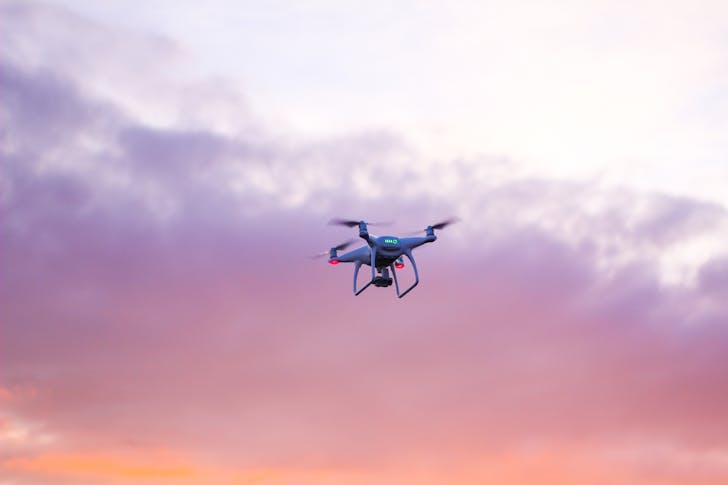Drones, or unmanned aerial vehicles (UAVs), have skyrocketed in popularity for both hobbyists and professionals, leading to inevitable questions about their capabilities. How high can a drone fly? This comprehensive guide will explore the legal regulations, technical specifications, and practical considerations that influence the maximum altitude of drones.
How High Can a Drone Fly Legally?
In the United States and many other countries, the legal flight ceiling for drones is standardized at 400 feet above ground level (AGL). This regulatory limit is set to prevent conflicts with manned aircraft, which generally fly much higher. It's crucial for drone operators to adhere to these rules, as surpassing this limit can lead to fines or more severe legal repercussions.

Eric Santoyo | Pexels | In many countries, the legal flight ceiling for drones is standardized at 400 feet above ground level.
However, there are exceptions. If a drone is flown within a 400-foot radius of a structure taller than 400 feet, it can legally ascend to a height equivalent to its topmost point. This provision allows for flexibility in specific scenarios, like building inspections or architectural photography.
The Technical Perspective on How High Can a Drone Fly
While regulations set one boundary, the design and capabilities of a drone determine its ultimate reach. Most commercially available drones, such as those from DJI, can ascend up to 1,640 feet—far above the legal restrictions—under ideal conditions. The actual flight ceiling of a drone is influenced by factors like motor power, design, and atmospheric conditions, which we'll discuss in more detail later.
Regulatory Framework Governing Drone Altitudes
FAA and EASA: Setting the Standards
In the U.S., the Federal Aviation Administration (FAA) governs the airspace drones operate in, imposing a 400-foot limit for both recreational and commercial drones under 55 pounds. The FAA can issue waivers for flights that require going beyond this limit, provided that detailed plans and safety measures are documented.
Across the Atlantic, the European Union Aviation Safety Agency (EASA) handles European drone regulations, setting a similar cap at 120 meters (approximately 394 feet). Like the FAA, EASA's rules are designed to integrate drones safely into the broader airspace ecosystem.
Local and National Laws
Beyond international and federal regulations, drone operators must also navigate varying local ordinances. These laws can restrict drone usage in certain areas or require additional permits for operation. Always research the specific drone laws in your area to avoid unexpected fines or legal issues.
Factors Affecting Drone Altitude
Drone Capabilities and Limitations
Technical specifications play a significant role in determining how high a drone can fly. Factors such as battery life, motor efficiency, and overall design impact a drone's ability to reach higher altitudes. Most drones on the market today have a flight time ranging from 15 to 30 minutes, with altitude and battery usage closely linked—higher flights drain battery life more quickly.
Environmental Influences
Weather conditions and air density are crucial environmental factors affecting a drone's performance. High winds can destabilize a drone or push it off course, while colder temperatures might reduce battery efficiency, lowering the possible altitude. Additionally, as altitude increases, air density decreases, which can reduce the effectiveness of a drone's propellers and motors, limiting its maximum height.

Erik Mclean | Pexels | Weather conditions and air density are crucial environmental factors affecting a drone's performance.
Practical Applications of High-Flying Drones
Commercial and Recreational Uses
Drones are employed in various sectors, from agriculture and crop health monitoring to real estate, providing aerial property views. Knowing the limits of how high drones can fly aids operators in planning safe, legal, and compelling missions.
Technological Advances
Advancements in drone technology continue to push the boundaries of what these remarkable devices can achieve. Better battery technology, enhanced GPS systems, and sophisticated obstacle avoidance algorithms enable drones to fly higher, longer, and more safely than ever before.
Conclusion
Understanding how high a drone can fly involves a balance of legal knowledge, technical insight, and practical application. Whether you are a hobbyist capturing stunning aerial photos or a professional surveying vast agricultural fields, respecting the altitude limits and recognizing the capabilities of your drone ensures a safe and successful flight every time.









